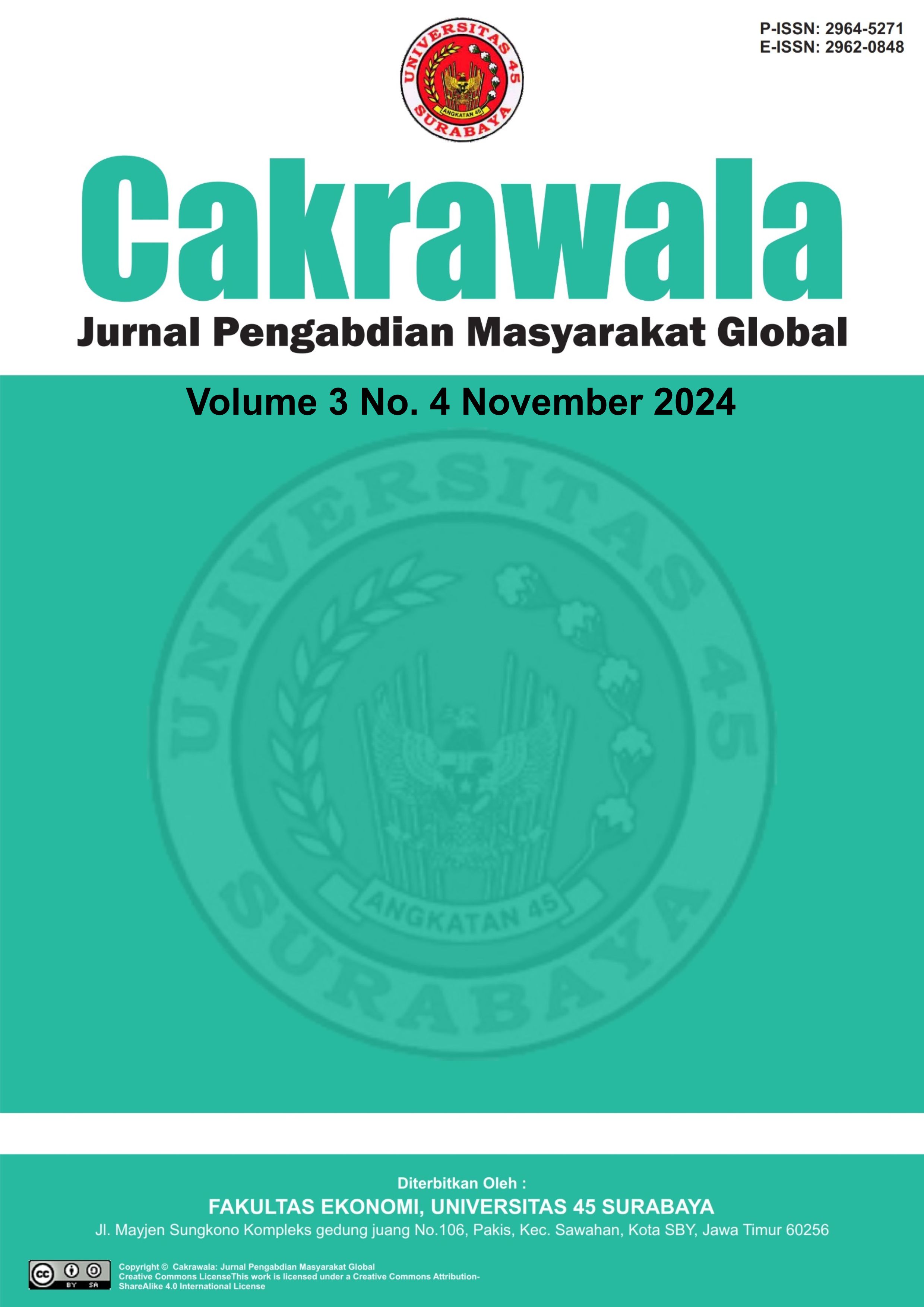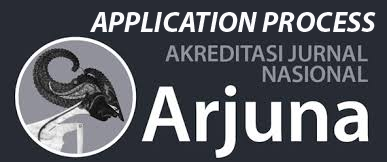Implementasi Perangkat Teknologi Informasi Sebagai Media Pengumpulan dan Pengarsipan Data Warga Masyarakat
DOI:
https://doi.org/10.30640/cakrawala.v3i4.3805Keywords:
PkM, Technology, Training, CipayungAbstract
Partners for Community Service (PkM) activities for the odd semester period 2023/2024 are the residents of RT.09 RW.03 Cipayung, East Jakarta. Results of observations and interviews with RT resident groups. 009 shows that there are still problems faced by partners. This is the background to the Team carrying out PkM activities, including: 1. Basic data on many residents at the Neighborhood Unit (RT) level is incomplete; 2. There are residents who stay at their domicile but do not report to the RT; 3. Old resident files are missing and damaged. 4. RT cannot show the demographics of residents quickly.The aim of PkM activities is to offer a solution to overcome the problems faced by PkM partners. The solution is to utilize information technology devices to create electronic forms. The form of activity carried out by the PkM team is providing training synchronously via the zoom application. The material presented to PkM Partners was 1. How to create electronic forms using Google Forms. 2. How to fill in data on the Electronic Form. 3. Read, display and download the results of input data stored in the database. Based on post-training observations and evaluations, the results of PkM activities show that RT heads are able to create and download data using electronic forms. Apart from that, the RT.009 community group is able to use electronic forms to enter data. This PkM activity is a transfer of knowledge to partners in the form of utilizing appropriate technology for society.
References
Al-Munir, M. (2018). Sistem Informasi Manajemen. Jakarta: Rajawali Pers.
Arief, M. R. (2014). Dasar-Dasar Pemrograman. Bandung: Informatika.
Berikut adalah lebih banyak referensi dalam gaya APA, berdasarkan format yang Anda berikan:
Burch, J. G., & Grudnitski, G. (1986). Information Systems: Theory and Practice (5th ed.). New York: John Wiley & Sons.
Effendy, O. U. (2003). Ilmu Komunikasi Teori dan Praktek. Bandung: Remaja Rosdakarya.
Indrajit. (2001). Analisis dan perancangan sistem berorientasi objek. Bandung: Informatika.
Jatmiko. Sistem informasi berbasis komputer.
Jeperson. (2015). Konsep sistem informasi. Yogyakarta: CV. Budi Utama.
Jogiyanto, H. M. (2005). Analisa dan desain sistem informasi: Pendekatan terstruktur teori dan praktik aplikasi bisnis. Yogyakarta: ANDI.
Laudon, K. C., & Laudon, J. P. (2018). Management Information Systems: Managing the Digital Firm (15th ed.). Upper Saddle River, NJ: Pearson.
Lindrawati. (2001). Sistem informasi akuntansi berbasis elektronik data processing. Vol. 1, No. 1, April, 27.
McLeod, R., & Schell, G. P. (2008). Management Information Systems (10th ed.). Upper Saddle River, NJ: Prentice Hall.
Muhammad, Emigawaty, & Damayanti, N. R. (2017). Pengantar teknologi informasi: Konsep & teori. Yogyakarta: Bina Darma.
Romney, M. B., & Steinbart, P. J. (2015). Accounting Information Systems (13th ed.). Boston, MA: Pearson.
Shelly, G. B., & Rosenblatt, H. J. (2012). Systems Analysis and Design (9th ed.). Boston, MA: Cengage Learning.
Silakan tambahkan lagi jika diperlukan!
Stair, R., & Reynolds, G. (2015). Fundamentals of Information Systems (8th ed.). Boston, MA: Cengage Learning.
Sutabri, T. (2012). Konsep Sistem Informasi. Yogyakarta: ANDI.
Wahyu, L., & Mihardjo, W. (n.d.). Budaya perusahaan di era digital berbasis co-creation-innovation.
Whitten, J. L., Bentley, L. D., & Dittman, K. C. (2007). Systems Analysis and Design Methods (7th ed.). Boston, MA: McGraw-Hill.
Downloads
Published
How to Cite
Issue
Section
License
Copyright (c) 2024 Selli Mariko, Ek Ajeng Rahmi Pinahayu, Aulia Ar Rakhman Awaludin, Nani Mulyani, Rahmawati Yulianty, Hardian Mursito, Romindo M. Pasaribu

This work is licensed under a Creative Commons Attribution-ShareAlike 4.0 International License.








